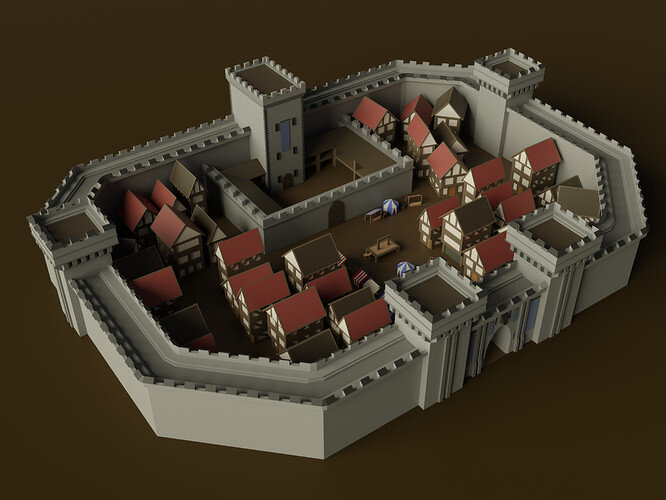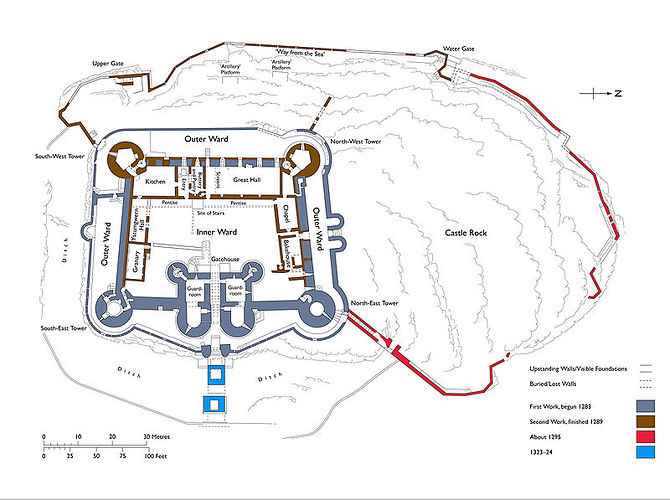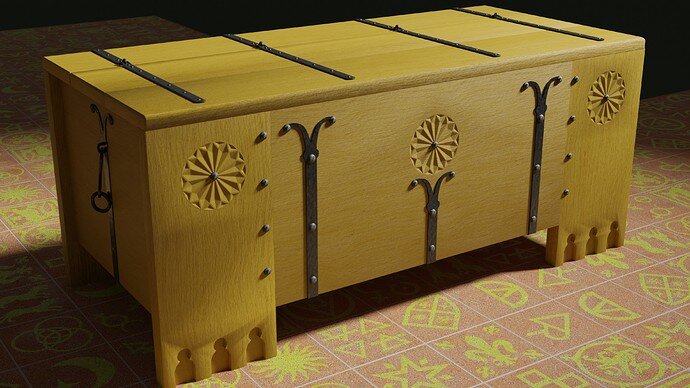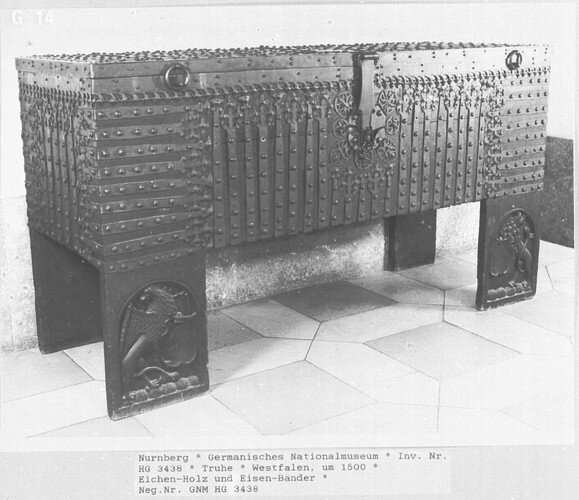Well my area of research is actual the roman period, so my knowlege on medieval chest carpentry is rather scarce  But I will try to share my thoughts based on this image and a quick research I made. The chest from your picture from the Laneham Church dates to the 13th century, it appears in some research papers. There ar definitley some later additions that are more ore less obvious, the key plate beeing the most obvious. Also the four round fittings next to it, which are exactly the parts that you identified correctly as later additions. The other iron bindings might be original. Iron applications are a matter of construction, safety, decoration and of course wealth. In this particulary case they dont seem neccessarry for the construction but are rather just decoration, for they dont seem to have a security purpose.
But I will try to share my thoughts based on this image and a quick research I made. The chest from your picture from the Laneham Church dates to the 13th century, it appears in some research papers. There ar definitley some later additions that are more ore less obvious, the key plate beeing the most obvious. Also the four round fittings next to it, which are exactly the parts that you identified correctly as later additions. The other iron bindings might be original. Iron applications are a matter of construction, safety, decoration and of course wealth. In this particulary case they dont seem neccessarry for the construction but are rather just decoration, for they dont seem to have a security purpose.
This chest from the 16th century for example is litterd with iron bindings, which are mostly just useless.
That brings me to the chest legs that you mentioned. A chest beeing elivated from the ground is more protected against pests, humidity, mould etc. Only a Chest for treveling might be better of without legs, because they tend to break. In several papers I found on that topic al lot of chests from that period had legs and ornaments like this one.
One thing that you left out but might be original are the leather straps on top. They might have been part of the original clowing mechanism ore something like that.
That beeing said I can assure you that chests like this one are deffinitly authentic for the medieval period. Bur also they where expensive in production so you would find them in churches or private chambers of wealthy persons. Deffinitly not in in a castle dungeon or a village hut. Mabe a simple version of a chest, but still furniture, especially with iron fittings, were really expensive.
Another thing that came to my mind when I lokked at all the great blender scenes from the dungeon lesson where the existance of crates like these:
I have played a lot of fantasy games myself and it never came to my mind, that crates like we know them are a farly young “invention” when international trade became populare in the modern industrial era (18th century onwards). Normal means of transportation in the medieval time where baskets, leather bags, ceramic and barrels (like you said without iron bindings but with rope, wich also wasnt cheap by the way).
Hope this helps in some way 
tl;dr Chests are ok, crates are not 
 So instead the whole scene became more of a medieval inspired castle. I wanted to add way more details but that became a bottomless pit and I really want to start with section 3
So instead the whole scene became more of a medieval inspired castle. I wanted to add way more details but that became a bottomless pit and I really want to start with section 3 



 Thats why this scene is maybe less “medieval inspired” than “fantasy”. Though there definitley were walled cities that also contained some sort of main keep. But those would not count as “castle” in that sense I guess.
Thats why this scene is maybe less “medieval inspired” than “fantasy”. Though there definitley were walled cities that also contained some sort of main keep. But those would not count as “castle” in that sense I guess.




